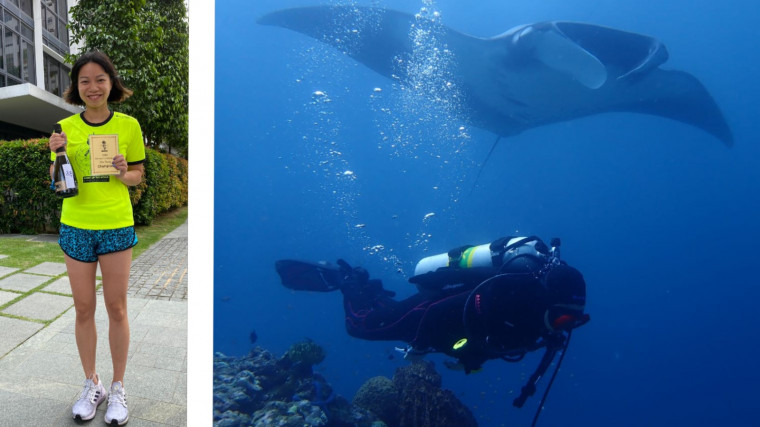I admit that after completing my first half marathon in 2013, I have almost completely stopped running on a regular basis.
I have been active most of my life, but running alone has never been easy for me, and without a goal to aim for, it was always too easy to quit.
In March 2020, the pandemic hit. Like so many others, I felt caged and restless, not being able to travel, not being able to visit loved ones back in Europe and struggling to separate my professional and personal lives amidst the working from home arrangements.
Then one day our gym trainer encouraged — read: forced — us to do cool-down laps after our usual HIIT classes on the nearby running track. I was reluctant at first, but found myself embracing the freedom and lightness as I ran. With the steady rhythm of my feet hitting the ground and my arms pumping by my side, and the light breeze that makes Singapore’s heat and humidity a bit more bearable, I could feel the exhilaration flowing through my veins.
So I started coming back to the track on my own whenever I felt overwhelmed or stressed out.
One Thursday evening, I noticed a group of individuals sporting bright T-shirts and running in pairs. I approached them and found out that they were part of Runninghour, an inclusive running club and social enterprise cooperative which aims to empower and integrate people with physical or intellectual disabilities through sports.
Running to support people with disabilities

It has been four months since I joined as a volunteer running guide but I have learnt so much more than I have ever been able to teach my newfound running buddies.
Runninghour has taught me so much about the dos and don’ts of supporting people with disabilities, including terminology that should or should not be used, and the power of asking for and listening to their needs first instead of automatically assuming that they need help.
I have received practical training on how to assist wheelchair users, how to guide people who are visually challenged, and how to work out with and motivate people with autism and intellectual disabilities.
The experience has been equal parts fulfilling, humbling and educational, and I come away inspired after every session: By the boy with autism who lost his father to Covid-19 and took a long hiatus from running because of the funeral — he’s tired but never complains when we do our laps.
By Zohra, who suffered a severe spinal cord injury in a car accident and became a quadriplegic at the age of 20, but turned her adversity into strength and is today an awe-inspiring diversity and inclusion advocate.
Or Chris, who is slowly losing her eyesight to glaucoma, yet refuses to let her disability stop her from completing a multitude of sports competitions. She leads a local blind tennis chapter, Soundball Singapore, co-chairs Runninghour, and is a force of nature I admire deeply.

Importantly, their stories have opened my eyes to the vast potential that sports has to advance social and environmental causes: I have since joined — and to my surprise — won the 5km female category at Run for Light, a race that raises funds to support a charity that is training guide dogs for the blind, and took part in the Wings for Life World Run, which donates all of its registration fees to finance spinal cord research.
Running to protect manta rays
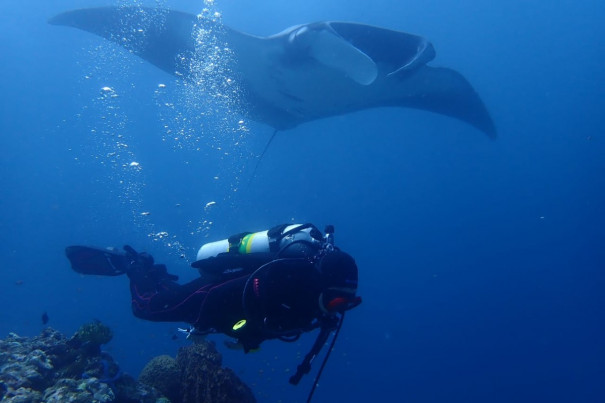
Most recently, I have committed to running 100km in June to raise funds in support of Manta Trust’s Cross The Oceans Challenge.
Manta rays are one of the smartest and most sociable creatures of the ocean and spotting them is a highlight for diving enthusiasts like me. They have the largest brains among all cold-blooded fish species, yet they are being hunted because according to Chinese traditional medicine they can cure cancer, increase breast milk supplies or even heal chickenpox — based on zero scientific proof.
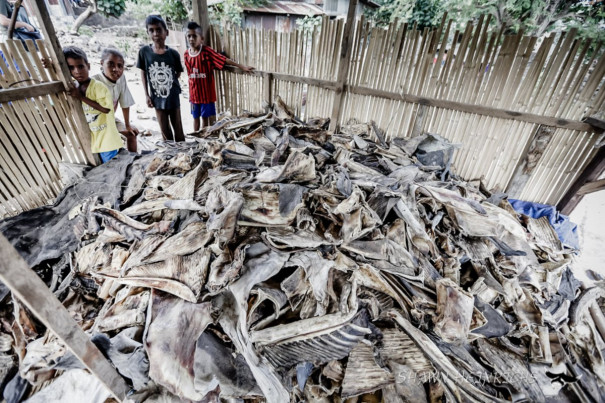
It’s no surprise that overfishing coupled with slow reproduction rates have meant that these intelligent gentle giants are racing extinction. A recent study estimates that the population numbers of oceanic sharks and rays plummeted by over 70% in just the last five decades.
In Singapore, white-spotted eagle rays and honeycomb whiprays were reportedly caught and injured by recreational fishers, although both species are classified as ‘vulnerable’ under the IUCN Red List of Threatened Species. Scientists and conservationists recommend that we keep a safe distance from endangered marine species, both to prevent further harm from being inflicted on them and to avoid injuring ourselves.
Through a combination of education, industry partnerships and research using innovative methods such as genetics and satellite tagging, Manta Trust aims to protect manta and devil rays – collectively known as mobulids – in some of their key habitats in the Maldives, Indonesia, Sri Lanka and Peru.
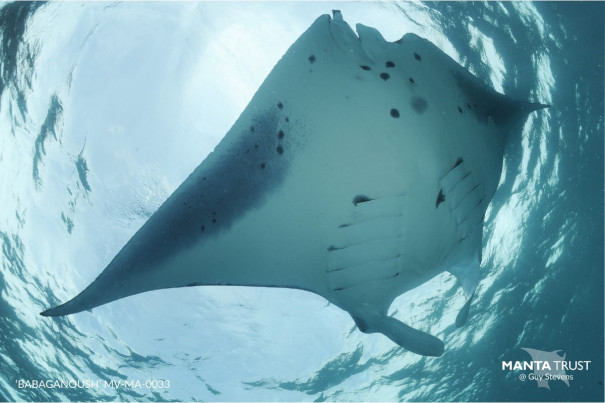
The non-profit’s milestone achievements include contributing to the re-assessment of both manta ray species — the giant manta and the reef manta — as ‘vulnerable’ under the IUCN Red List of Threatened Species, and advocating for Hanifaru Bay in the Maldives, a significant aggregation site for reef mantas, to be declared a Marine Protected Area.
To tackle the funding crisis experienced by most conservation organisations due to Covid-19, the Cross The Oceans Challenge brings together a team of all ages, abilities and nationalities in a virtual sporting event to raise funds for marine conservation.
By June 30, together with my 24 fellow Team Manta members, we aim to run, walk, swim, cycle and kayak 2,575km — which is the distance from Manta Trust’s headquarters in the UK to the Azores in Portugal.
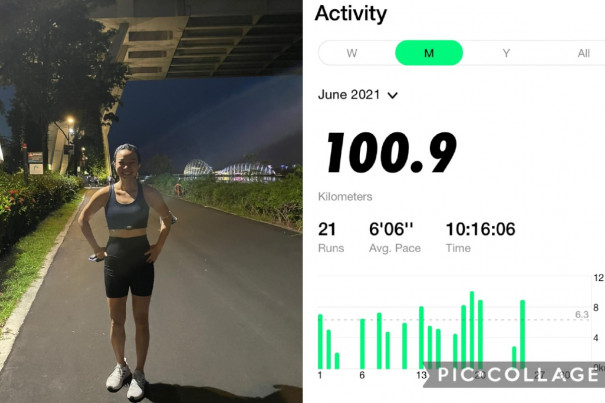
We have already hit our distance target and are working towards meeting our collective fundraising goal of £8,000 (or about S$15,000), which will go towards supporting the non-profit’s affiliate project in the Azores and other conservation efforts by Manta Trust.
Running has always been my greatest reprieve from hardships, and being able to contribute to, even if infinitesimally, to a greater purpose has been an ultimate blessing — I now aim to run not just for myself but also for those who cannot.
Would you like to support manta conservation efforts? Donate on my Cross The Oceans fundraising page. You can also find out more about Runninghour here.
If you like what you read, follow us on Twitter and Google News to get the latest updates.
